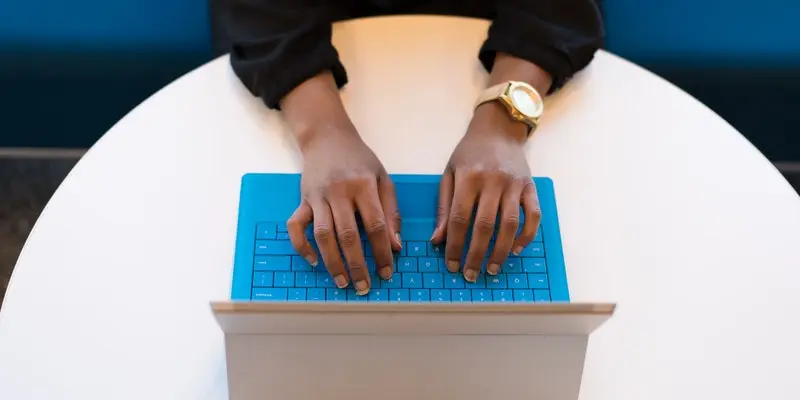
- May 2022
- 0
Tips and Tricks: Learn to Type Faster and Accurately
24th May 2022
We've all heard the phrase “The pen is mightier than the sword ". But, how true is that with today's digital age? We're becoming more and more paperless, and typing has become a fundamental skill that more people need to learn.
If you aren't a fast and accurate typist, you could really be holding yourself back at work or in your personal life.
What if there was an easy way to type faster while also improving accuracy? That's what this post will be about!
Learning to type can be difficult, especially if you are learning a new typing technique after many years of non-optimal typing. This article will show you a number of tips that will help you type faster in a comfortable and healthy way.
Practicing the tips in this article on a regular basis will make a huge difference when it comes to speed, accuracy and your physical health. We hope they help.
Improving your typing technique
Use minimal force when typing
Sometimes when typing, you have the urge to jab your fingers at the key with high speed and forcefulness. This may be satisfying in the moment, but it will stress your hands, increase errors, and lower your typing speed. You should always use minimal force for you to press all keys comfortably and increase your speed.
Avoid moving your hands unnecessarily
Do your best to keep your hands stationary while typing. Moving your hands around too much will slow you down. Typing can be tiring and frustrating when you move around too much, and it’s important to maintain your energy level to focus on your typing practice.
Remember to practice touch typing consistently
It’s important for you to be consistent with the fingers you use to press specific keys. Although learning touch typing will be difficult, it will not work if you miss practice or cheat too much by hunting and pecking. You can enhance your consistency by using a single typing system every time out.
If you notice a bad habit creeping in when typing, you should correct it as soon as you can. Failing to adjust will slow down your productivity, which will negatively impact your performance.
Setting up your workspace
Creating and organizing your workspace is crucial for your success. Typing is a mental activity but it also has significant impacts on physical health if done incorrectly, or with a poorly set-up workspace. A good desk organization will help you type faster and enhance your comfort and health.
Positioning the keyboard
There are a few things you should remember about positioning your keyboard:
a) Place the keyboard at the center of your workspace – The lettered part should directly face you. Placing your keyboard on the left or right side will lead to you twisting your arms and torso which creates discomfort issues and arm fatigue.
b) The keyboard should not be too close or far away from you – The keyboard should be positioned at a height that will enable you to keep your elbows at 90 degrees. Your arms should not be stretching across the desk just to reach your keyboard.
Positioning yourself
It is common to slump over when typing or allow your wrists to hit the table. Although it might feel awkward at first, you need to put your body in the optimal position for typing to save yourself physical pain later and to increase your typing speed.
a) You should maintain a neutral wrist position – Ensure that your wrists are not angled upwards or downwards when you are typing. Angling them will strain your wrists and typing will be very uncomfortable. It can even lead to tendonitis.
b) Your neck should be relaxed and your head should be straight and balanced on top of your spine in a comfortable manner.
c) The lower back should be well supported by a chair or cushion with lumbar support, to avoid slumping too much at your desk.
Positioning the monitor
If your monitor is not placed properly, you will struggle to maintain good posture while working. You should make sure that your monitor is directly in front of you and that the top part is at eye level. Ideally, you should be about two feet away. If you are using a laptop, you should think about investing in a laptop stand.
Use an ergonomic keyboard
Ergonomic keyboards will reduce the work of your hands while improving efficiency. Traditional keyboards will allow you to learn better typing technique, but they are far more likely to strain your hands due to poor positioning of the keys. If you struggle with hand strain, or if your keyboard is slowing your productivity, you should look for an ergonomically-designed option.
If you follow these tips and tricks, you will see improvements in your physical health and your typing ability. Happy typing!
